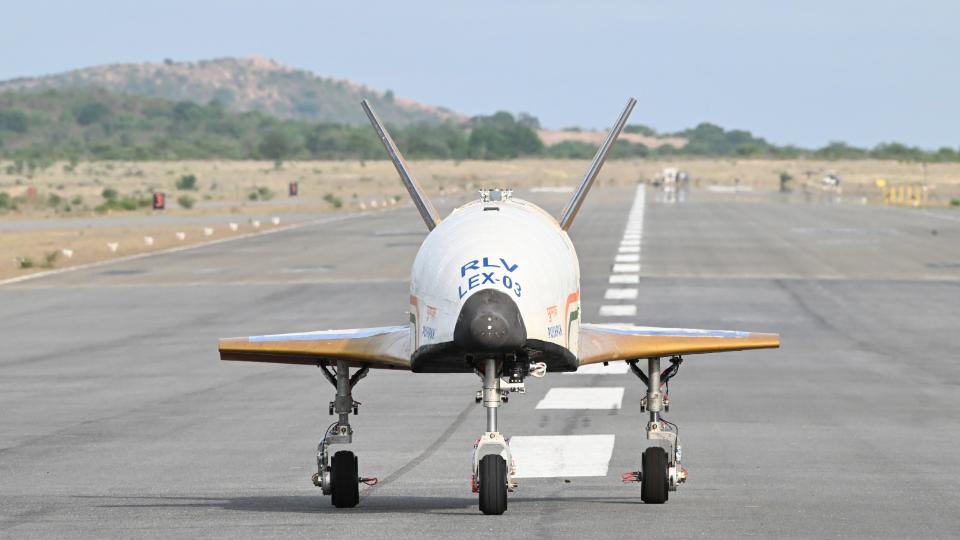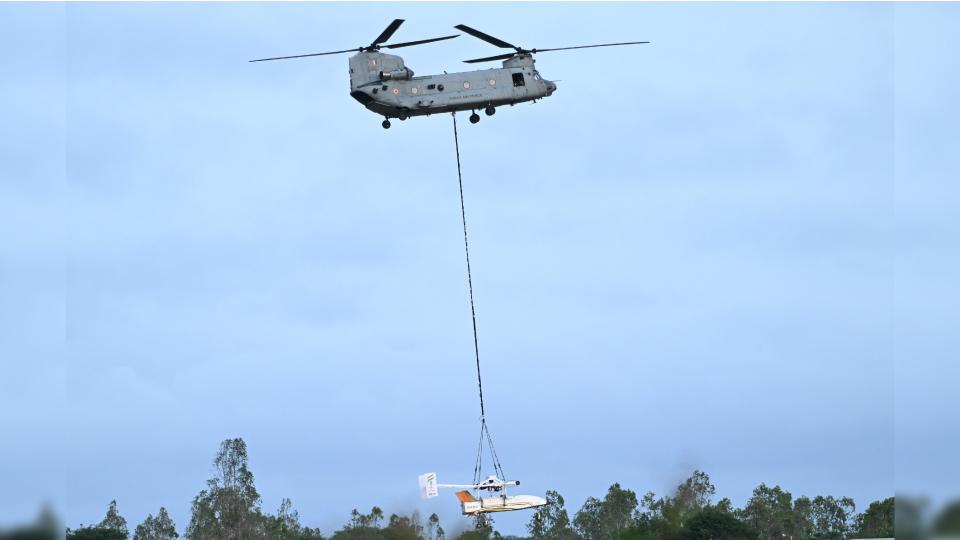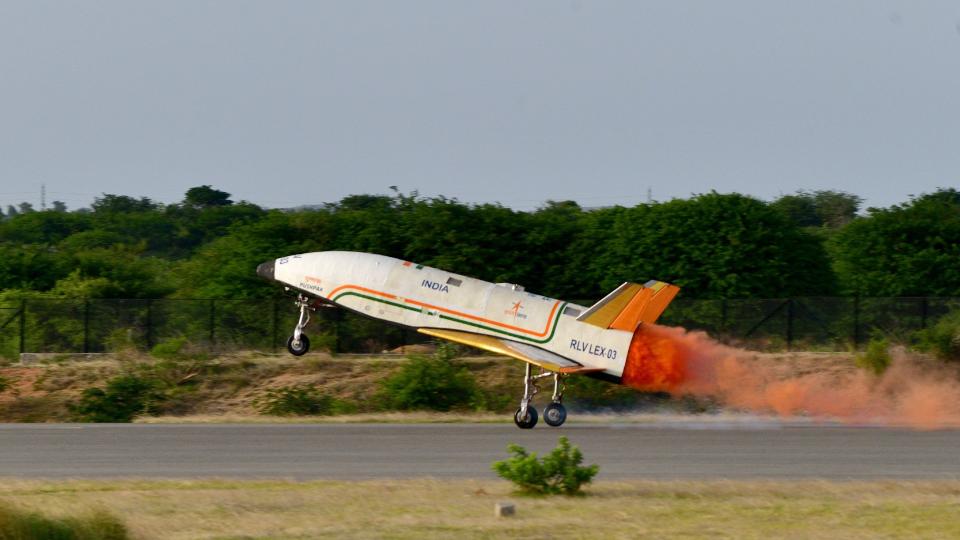India recently completed a series of tests aimed at demonstrating homegrown technology for autonomously landing its reusable launch vehicle, agency officials said in a recent news release.
The milestone gets the country another step closer to its goal of operating such a vehicle end-to-end within this decade, the technology for which can be adapted to its fleet of launch vehicles for multiple uses across missions in a more cost-effective manner.
The latest demonstration, which was the third and final RLV Landing Experiment (LEX), was carried out by the Indian Space Research Organisation (ISRO) on June 23, 2024 in a government-owned outdoor testing facility in Karnataka, a state in southern India. The space plane, named Pushpak, “executed a precise horizontal landing, showcasing advanced autonomous capabilities under challenging conditions,” the space agency said in a recent post on X. “With the objectives of RLV LEX accomplished, ISRO embarks into RLV [orbital reuse vehicle],” which aims to fly the prototype into space for an autonomous return.


The final test was led by the Kerala-based Vikram Sarabhai Space Centre (VSSC), which in 2020 was directed to boost its launch-vehicle development to achieve full reusability in this decade.
From observations of the first two landing tests — last year’s RLV LEX-01 and LEX-02 that was conducted in March — ISRO said it strengthened Pushpak’s mechanical structures and landing gear so that the space plane could tolerate higher landing speeds. The final test on June 23 tested the vehicle’s landing capabilities under more challenging conditions compared to previous tests, including harsher wind, said ISRO.
As part of the test, the 21-foot-long (6.5 meters) space plane was flown by a Chinook helicopter, piloted by the Indian Air Force, to about 2.8 miles (4.5 kilometers) above the surface and released mid-air.


To test the plane’s landing technology, the vehicle was intentionally released 1640 feet (500 meters) off-center from the runway below, ISRO said. The plane then automatically maneuvered itself to approach the runway, and executed an accurate touchdown at the center of the runway.
“The in-built systems performed their roles perfectly and ensured that the plane could make its third consecutive landing on the runway centerline,” Unnikrishnan Nair, an aerospace engineer and the director of VSSC, told WION. “From an initial 500 meters distance from the runway centerline, the plane was finally at 11 cm or 0.1 meter from the runway centerline.”
The vehicle used its parachute to reduce its speed from nearly 200 mph (322 km/h) to about 62 mph (104 km/h), and later deployed its brakes to decelerate and come to a stop. This way, the test simulated approach and landing conditions similar to that of a vehicle re-entering Earth’s atmosphere from a trip to outer space, said ISRO.


RELATED STORIES:
— India successfully lands reusable space plane prototype for 1st time (video)
— Watch India’s prototype space plane ace a landing test (video)
— India unveils astronauts for 1st human spaceflight mission in 2025
The vehicle’s body and flight systems were used as-is from the second landing test that was carried out in March, which “shows ISRO’s strong ability to design flight systems that can be reused for multiple missions,” said Girish Linganna, an aerospace and political analyst based in Bengaluru, according to The Week.
Developing technology essential for such a reusable launch vehicle “is one of the most technologically challenging endeavors of ISRO,” the space agency has previously said.
With the success of the final landing test of the space plane, the agency has taken another significant step toward realizing this goal.
